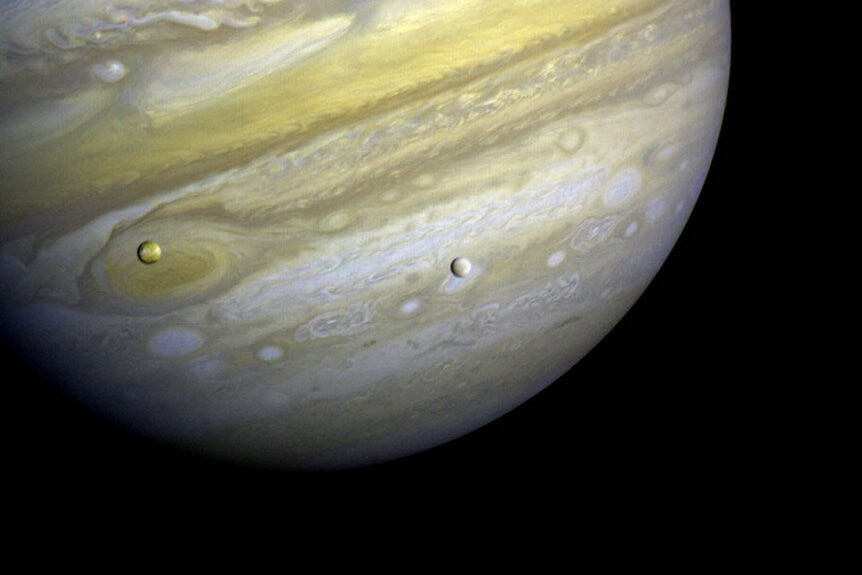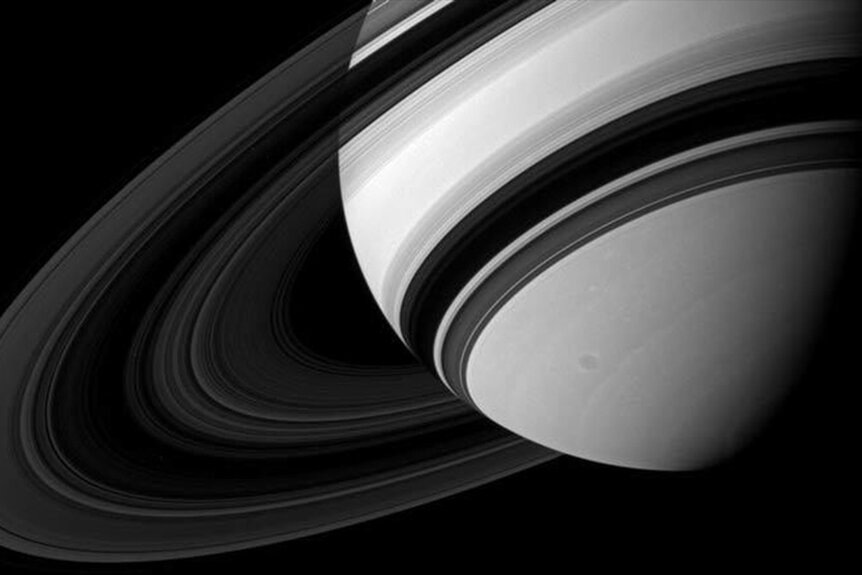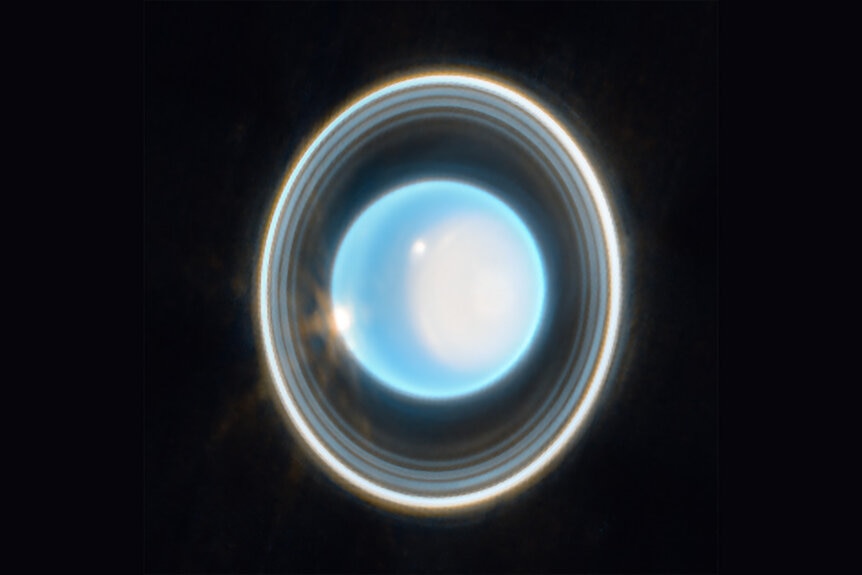Create a free profile to get unlimited access to exclusive videos, sweepstakes, and more!
How Long Is a Day on Jupiter, Saturn, Uranus, and Neptune?
On Neptune, you'd have to pass down your calendar to your kids.
How long is a day, exactly? For Sheila (Kaley Cuoco), a day can last as long as she wants, thanks to a tanning bed time machine and a desire to craft the perfect date, no matter how many attempts it takes. Every night, when Sheila and her new paramour Gary (Pete Davidson) part ways, she returns to the time machine tucked into a local nail salon and starts the day over again, to increasingly dramatic effect in Meet Cute, streaming now on Peacock.
Twenty-four hours is a nice round amount of time for anyone wanting to relive a day on Earth, but if you want a do over on another world, you’ll need to set your time machine to some other amount of time. The length of a day is determined by how quickly a world spins around its own axis, while a year is determined by how long it takes to make a lap around its parent star. And those two things don’t necessarily have anything to do with one another.
RELATED: New Study Suggests Up to One Third of Planets Could be Habitable
When it comes to building a calendar for the rest of the planets in our solar system, there are two things at play. The first is distance from the Sun, which more or less determines the length of the year. Planets farther away from the Sun necessarily have a longer distance to travel, like the outside path on a racetrack but they also move more slowly because the Sun’s gravitational influence is lessened by distance. Meanwhile, the day is determined in large part (though not entirely) by the size of a world and the sort of stuff it’s made. The bottom line is tracking time gets a little wonky when you get out to the gas and ice giants.
The Length of a Day and Year on Jupiter
The asteroid belt cuts a boundary between two distinct parts of our solar system. Inside the belt, we have the rocky planets, the sorts of worlds you can imagine yourself standing on. They’re roughly Earth-sized and made mostly of solid, rocky materials. Barring plant and animal life, if you stood on the surface of any of them it would look at least recognizable as a world.
Outside the belt, the gas and ice giants are totally different. Their immense size and mass grabbed hold of much lighter elements like hydrogen, building thick gaseous atmospheres obscuring their interior, and all of that new mass added angular momentum, spinning them up. Jupiter, the first gas giant beyond the asteroid belt, is the largest of the bunch.
RELATED: NASA’s Juno Spacecraft Captures Green Lightning on Jupiter
Perched at a distance of 778 million kilometers (484 million miles), Jupiter is more than five times the distance from the Sun to the Earth. Even at that distance, it’s clearly visible in the night sky with a diameter of 69,911 kilometers (43,440 miles), roughly 11 times the diameter of the Earth. The combination of immense mass and distant orbit gives Jupiter a day that is only 10 hours — the shortest in the solar system — and a year 12 times as long as an Earth year. On Jupiter, there are 10,399 Jovian days for every Jovian year.
The Length of a Day and Year on Saturn
Leaving Jupiter, we come next to Saturn, perhaps the most beautiful planet in the solar system. At a distance of 1.4 billion kilometers (886 million miles), light takes 80 minutes to travel from the Sun to Saturn.
Slightly smaller than Jupiter, with a diameter of 58,232 kilometers (36,183 miles), Saturn is fainter but still visible to the naked eye. The planet’s ring system, invisible without a telescope or binoculars, extends much farther out to the sides. At that vast distance, Saturn travels slowly around the Sun once every 29.4 Earth years. Meanwhile its mass, less than Jupiter’s but still immense, has spun Saturn up to a 10.7 hour day. Because of Saturn’s rapid rotation (second fastest in the solar system) and its long year, you would experience 24,125 days for every year on the sixth planet from the Sun.
The Length of a Day and Year on Uranus
Beyond Saturn, we reach Uranus, the first of the ice giants. With a diameter of 25,362 kilometers (15,759 miles), only about four times that of Earth, Uranus is considerably smaller and less massive than our first two planetary stops. As you might expect, that has an influence on the length of the day.
RELATED: A lack of wind keeps a dull haze layer around Uranus
At the same time, Uranus orbits at an incredible distance of 2.9 billion kilometers (1.8 billion miles), roughly 20 times the distance from here to the Sun. Light takes 2 hours and 40 minutes to cover the distance. Uranus turns every 17 hours, just a little more than two thirds the length of an Earth day as it carves a long path through deep space in an 84-year orbit around the Sun. Anyone celebrating an anniversary on the seventh planet from the Sun will have to wait 43,323 Uranus days between each one.
The Length of a Day and Year on Neptune
Neptune is our last stop on the solar system calendar tour (no shade to Pluto). The slightly smaller sibling to Uranus, Neptune has a diameter roughly four times the size of Earth at 26,622 kilometers (12,299 miles) from side to side. And it orbits way out in the suburbs at a distance of 4.5 billion kilometers (2.8 billion miles).
At 30 times the Earth-Sun distance, light takes four hours to travel the distance. Way out there, Neptune orbits lazily once every 165 Earth years while spinning out a Neptunian day once every 16 hours. All told, you’d mark 90,285 days off your Neptunian calendar before you’d have to get a new one. Of course, you’d have to live through two human lifetimes to pull it off.
That or a time machine shaped like a tanning bed. Catch Meet Cute streaming now on Peacock.


































